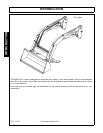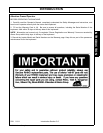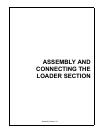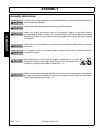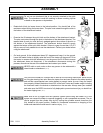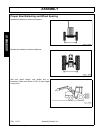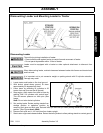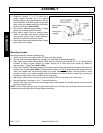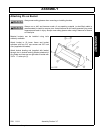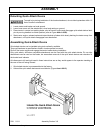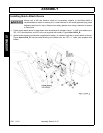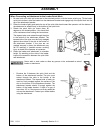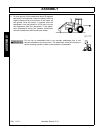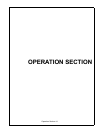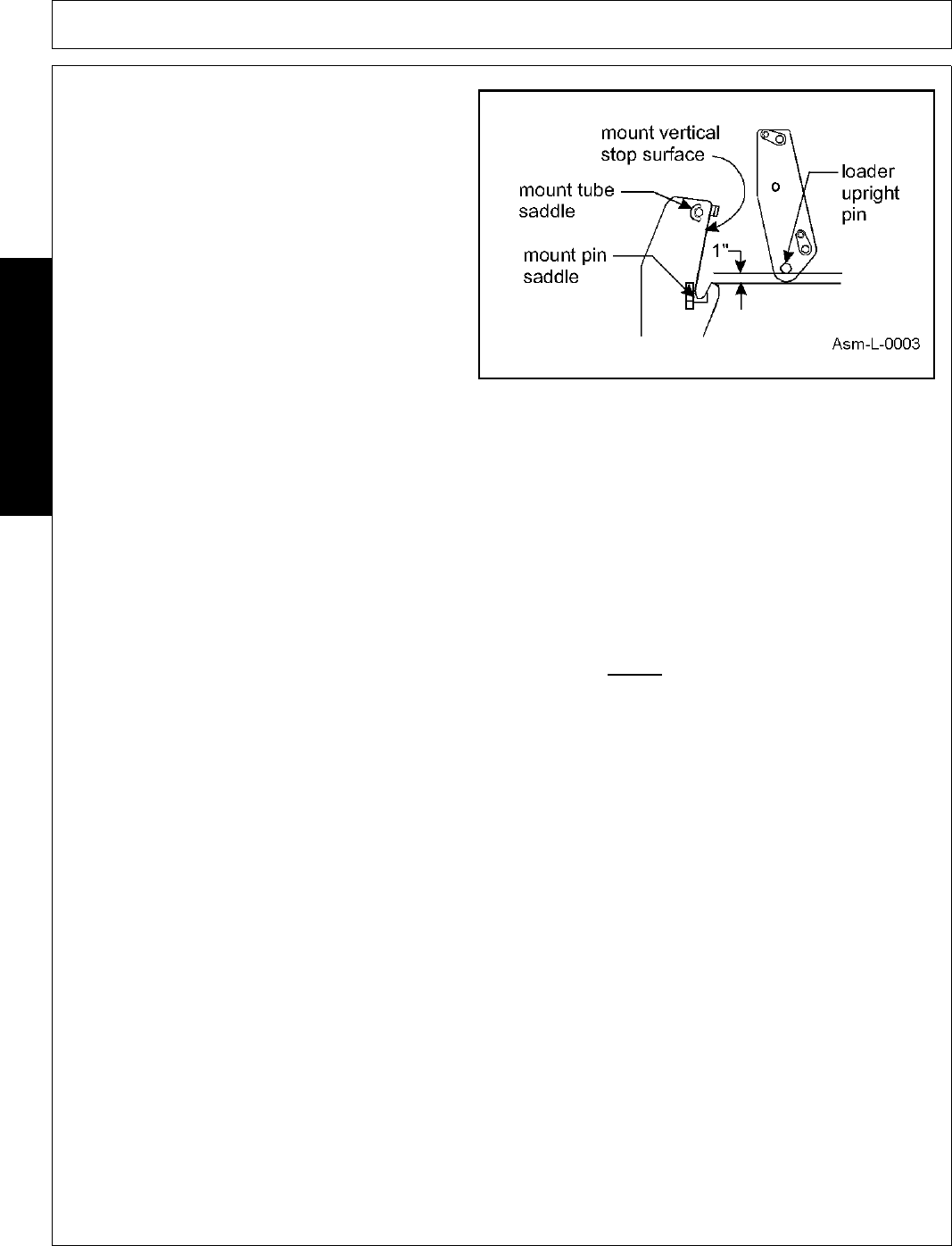
ASSEMBLY
5211 01/11 Assembly Section 3-6
© 2011 Alamo Group Inc.
ASSEMBLY
8. Extend lift cylinders 10” to 12” to rotate top of
loader uprights forward out of the mount,
allowing tractor to be pushed rearward. Retract
bucket cylinders until lower loader upright pins
clear mount pin saddles and front tires and/or
fenders (See Figure Asm-L-0003).
9. Move tractor rearward approximately 6”, being
certain not to stretch hydraulic hoses.
10. Stop tractor engine and set parking brake.
Relax lift cylinders and bucket cylinders by
moving each control lever in both directions.
Disconnect hydraulic hoses from tractor.
11. Start tractor engine and release brakes. Slowly
back tractor out of loader.
Mounting Loader
Mounting is basically reverse of dismounting.
1. Slowly drive tractor up to loader. Shut off tractor and apply brakes.
2. Connect hydraulic hoses. Make sure couplers are clean before connecting together.
3. Start engine and release parking brake. Make sure lift cylinders are extended 10” to 12”. Stroke bucket
cylinders to raise or lower uprights for loader upright pin to clear each front mount pin saddle by
approximately 1” (See Figure Asm-L-0003).
4. Drive tractor forward until loader upright pins contact mount vertical stop surfaces just above the mount pin
saddles (See Figure Asm-L-0003). Extend bucket cylinders to FULLY
seat both loader upright pins into
mount pin saddles and raise parking stands off ground. Retract lift cylinders, allowing tractor to move
forward. Continue until loader uprights have fully seated into back of mount saddles by retracting lift
cylinders to raise tractor front end (tires can be off ground).
5. Stop engine. Allow tractor front end to lower by relaxing ONLY lift cylinders with control lever.
6. Set parking brake. Insert two 1-1/4 x 7” pins and linch pins.
7. Remove linch pins and hitch pins from parking stands, rotate stands into storage position and secure with
hitch pins and linch pins.
NOTE: If front wheel spacings were changed while loader was off tractor, tire and fender clearances must be
checked and possibly adjusted to insure proper clearances.



